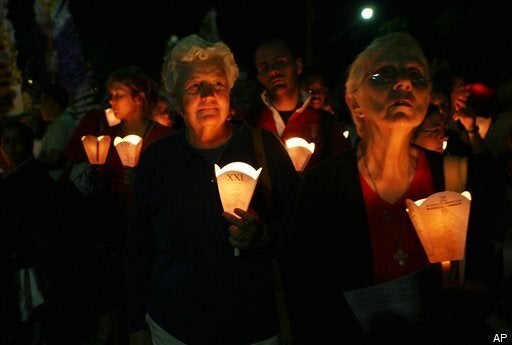
SAN SALVADOR -- Hours before President Obama was set to land in their country, Salvadorans were listening and reading -- and weighing -- each statement he made before his historic arrival. From the crowded, tin-roofed shantytowns of Soyapango -- one of the most densely populated areas in the hemisphere -- to the gigantic gated mansions of the Escalon district in San Salvador, Obama's words seemed to gain weight with each minute leading up to the arrival of Air Force One.
Expectations were almost as varied as the many rumors and questions filling the smoggy air in this political country where, according to the Catholic University, one of every three people organized against the U.S.-backed government during the bloody 12-year civil war. Nearly 20 years after the end of that war, one would be hard pressed to find someone in this country of 6.5 million whose conversation did not eventually turn to a story about a friend, family member or acquaintance who was among the 75,000 who died in the conflict. To date, few have been brought to justice for these deaths, and many here wonder if Obama will apologize for or even acknowledge the U.S. government's support for the Salvadoran regime that according to a report by the United Nations Truth Commission was responsible for 95 percent of the deaths. Salvadoran President Mauricio Funes has already acknowledged and apologized on behalf of previous Salvadoran governments.
"What did he mean when he said that we should not be trapped by our history?" asked Alonso Flores in Cuzcatlan Park, not far from the cathedral where Obama will visit the tomb of the most famous Salvadoran in history, slain Archbishop Oscar Romero. Flores was referring to statements the U.S. president made in response to a Chilean journalist who asked whether the United States should apologize for its role in the military coup that led to the death of then-President Salvador Allende. "Is it true that Obama is going to visit the tomb of Roberto D'Abuisson?" Flores wondered. Rumors of a possible Obama visit to the tomb of the notorious founder of the ARENA party (and, according to the UN Truth Commission, the paramilitary death squads that killed Romero) were sparked by recent statements made by ARENA party legislator Mario Valiente, who suggested that the president should also lay a wreath on the tomb of D'Abuisson.
Obama's statements about history have a special resonance for Katya Martinez and Douglas Magana, two students born three years after the civil war.
"I hope Obama says something about what happened to my uncle and other family members," said Martinez, who was staring into the 1980 section of the "Massacres in El Salvador" part of the Monumento a la Memoria y la Verdad (Monument to Memory and Truth). The black granite memorial in Cuzcatlan Park to 30,000 (cases documented by the Truth Commission) of the 75,000 men, women and children killed during the war.
"Obama should know how important it is not to forget," added Magana, who said he thought homicides in El Salvador, which have now surpassed levels seen during the war, will not end unless "we have someone like General Martinez again. He was strict." Magana's was referring to Maximiliano Hernandez Martinez, the dictator who initiated El Salvador's long line of military dictatorships with the massacre of more than 30,000 mostly indigenous people in 1932, and an accompanying myth that what historians call "La Matanza" (The Great Killing) was necessary to cure the crime problem that took place during the only economic downturn worse than the one El Salvador is now experiencing.
When I told Magana and Martinez about my interviews with a close relative who survived the massacre, they paused and thanked me for sharing information about a chapter of Salvadoran history that, until recently, hadn't been taught in schools.
After saying goodbye, they walked along the rest of the football field-long monument built as "a space for hope, for dreaming and building a more just, humane and equal society."
This report appeeared originally in New America Media and was made possible by support from the Pulitzer Center.